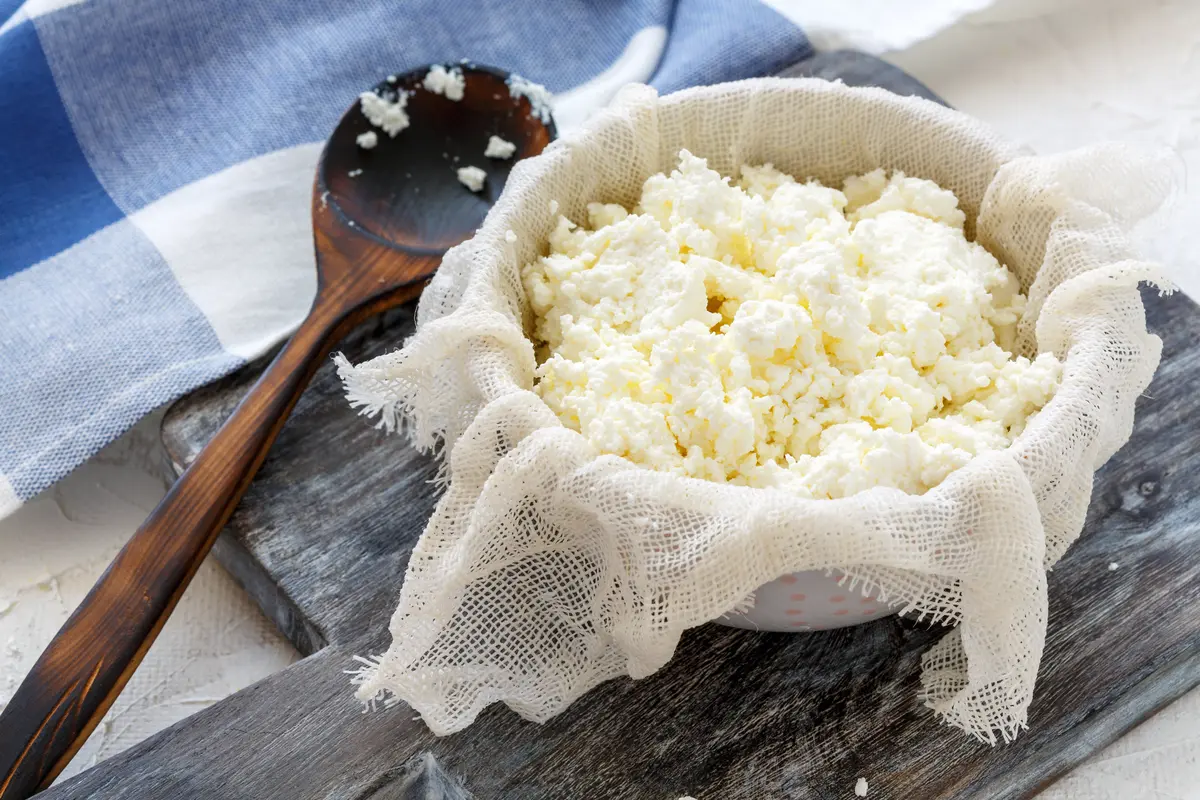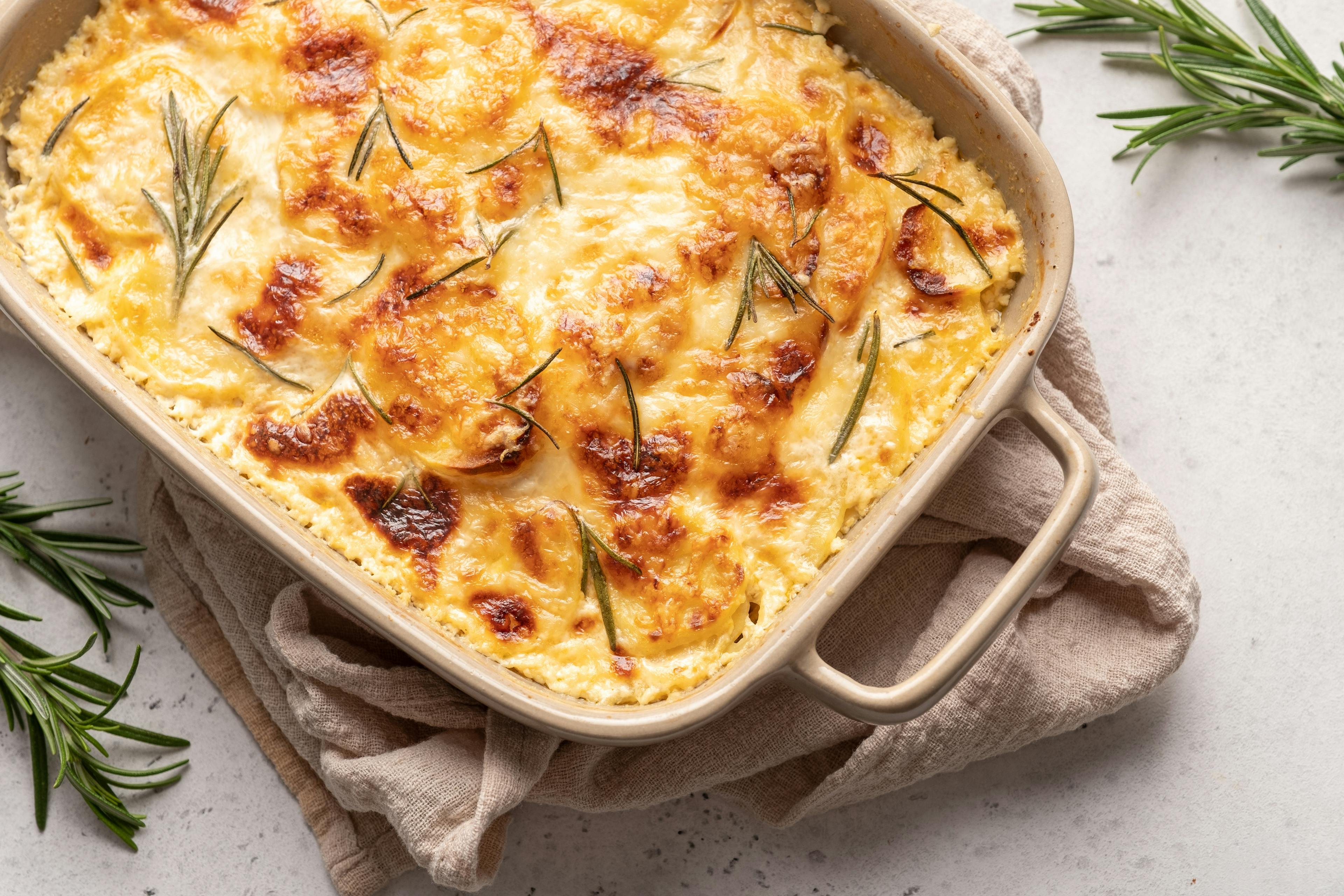
Ingredients
Get them through the links below to support the creator.
- 4 gallon milk
- 1 cup lemon juice
- Cold water (for rinsing)
- 4 tsp salt (optional)
Nutritional Information
Calculated based on standard values with available measurements and may therefore not be accurate.
Nutritional information not available.
Homemade Cottage Cheese
Instructions
Step 1
Heat the Milk: Pour the whole milk into a large pot and place it on the stove over medium heat. Slowly heat the milk, stirring occasionally, until it reaches 80°C (ca. 180°F). This will take about 15-20 minutes. Keep an eye on the milk to prevent it from boiling.
Step 2
Add the Acid: Once the milk reaches 80°C, remove it from the heat. Stir in the white vinegar or lemon juice. You should start to see the milk curdle and separate into curds (solid) and whey (liquid). If it doesn't curdle immediately, add a little more vinegar or lemon juice, 1 tablespoon at a time, until it does.
Step 3
Let it Sit: Allow the milk to sit undisturbed for about 10 minutes to fully separate into curds and whey.
Step 4
Strain the Curds: Line a colander with cheesecloth or a clean kitchen towel and place it over a large bowl or in the sink. Gently pour the curdled milk into the colander to strain out the whey. Let it drain for about 5 minutes.
Step 5
Rinse the Curds: Gather the edges of the cheesecloth or towel and tie them together to form a bundle. Hold the bundle under cold running water, gently squeezing and massaging the curds to rinse off any excess whey and to help them cool down.
Step 6
Salt the Cheese (Optional): If desired, sprinkle salt over the curds and gently mix it in to add flavour.
Step 7
Drain and Serve: Hang the bundle of curds over the sink or a bowl and let it drain for about 30 minutes to an hour, depending on how dry you want your cottage cheese. Once drained to your desired consistency, transfer the cottage cheese to a container and refrigerate until ready to use.
Step 8
Enjoy: Homemade cottage cheese is delicious served on its own, with fresh fruit, or mixed into salads and recipes.
Homemade cottage cheese can be stored in an airtight container in the refrigerator for up to one week. Make sure to give it a stir before serving if any whey separates.
Recipe Story
Homemade cottage cheese, a versatile dairy delight, has been a cherished culinary tradition in many cultures for centuries. Originating from the heart of rural kitchens and farmsteads, this simple yet wholesome creation has found its way into modern households worldwide, cherished for its creamy texture, delicate flavour, and myriad health benefits.
Dating back to ancient times, the process of curdling milk to produce curds and whey, the fundamental components of cottage cheese, has been practiced across various civilisations. Its popularity stems from the ease of preparation using minimal ingredients, making it accessible to households of all economic backgrounds. In Hindu traditions, cottage cheese holds a significant place, often used in religious rituals and as a staple in vegetarian diets due to its rich protein content.
The appeal of homemade cottage cheese extends far beyond its cultural and religious significance. For those adhering to dietary restrictions, such as gluten-free, Halal, and vegetarian diets, it serves as a versatile ingredient suitable for a wide range of culinary applications. Additionally, its low-fat and low-lactose variations make it an ideal choice for individuals following weight management programs or seeking alternatives to traditional dairy products.
In recent years, with the surge in health-conscious lifestyles, homemade cottage cheese has experienced a resurgence in popularity. Its inclusion in ketogenic diets for its low-carb content and its reputation as a low-calorie, nutrient-dense food has elevated it to a staple in the repertoire of health-conscious cooks. Moreover, the customisable nature of cottage cheese allows for endless creativity in the kitchen, whether enjoyed simply with fresh fruit or incorporated into savory dishes and desserts.
In essence, homemade cottage cheese epitomises the marriage of tradition and modernity, offering a timeless culinary experience that continues to captivate taste buds and inspire culinary innovation across generations.







